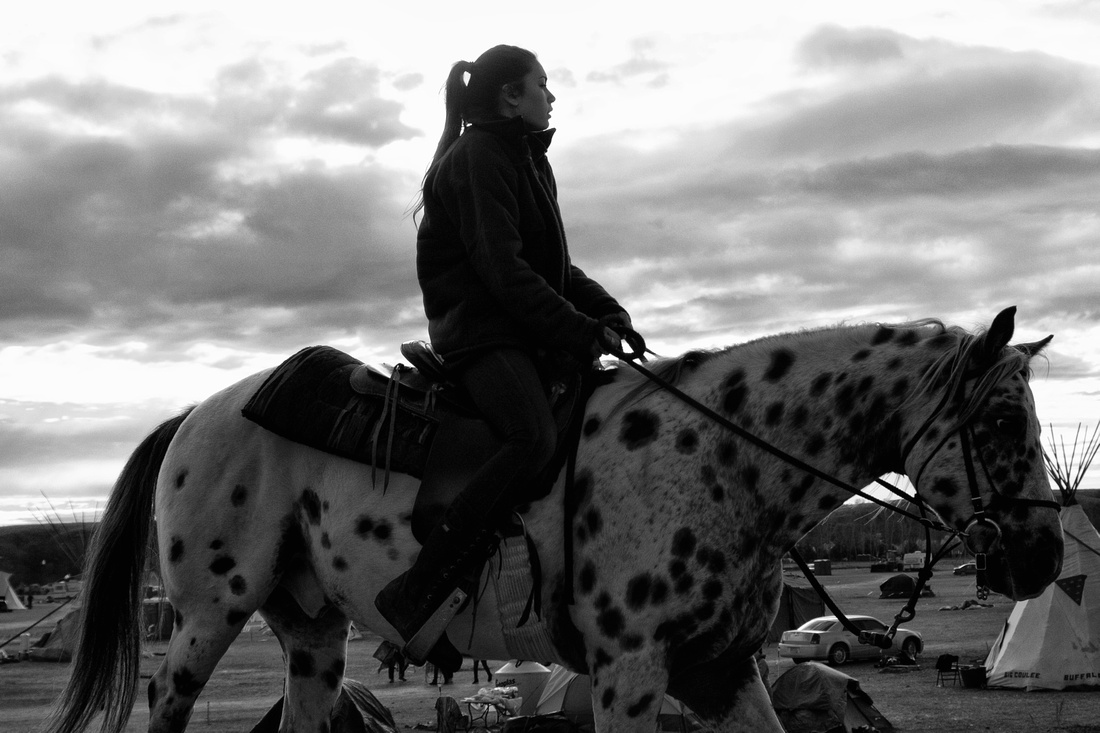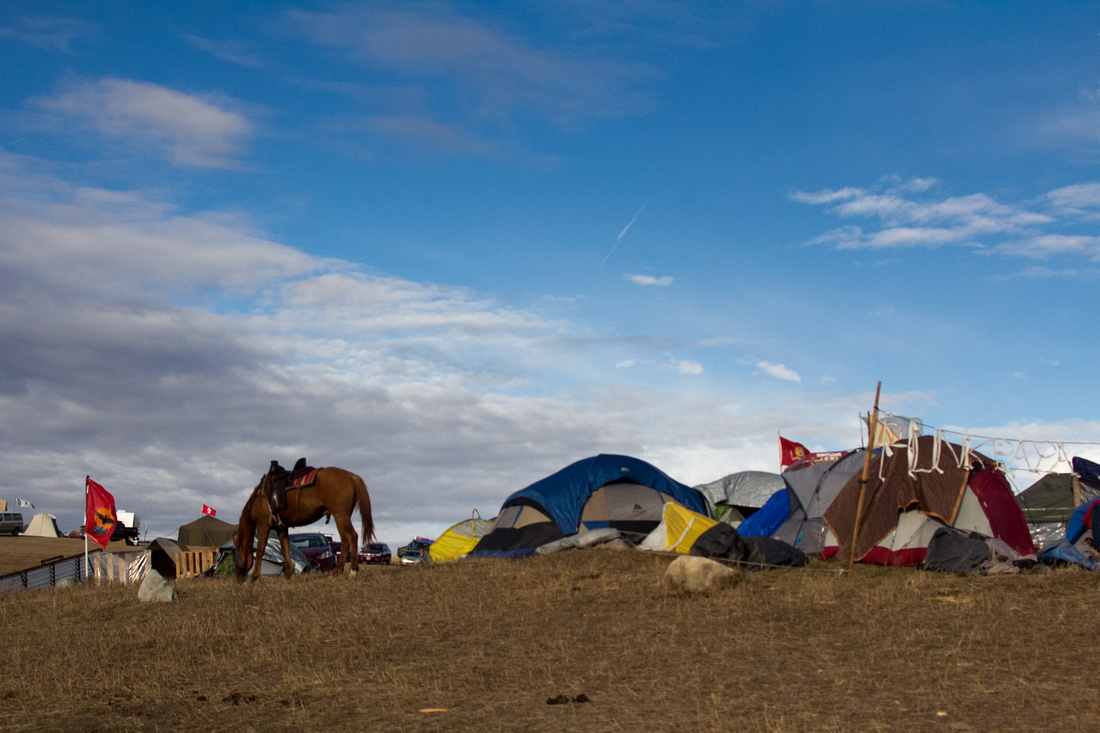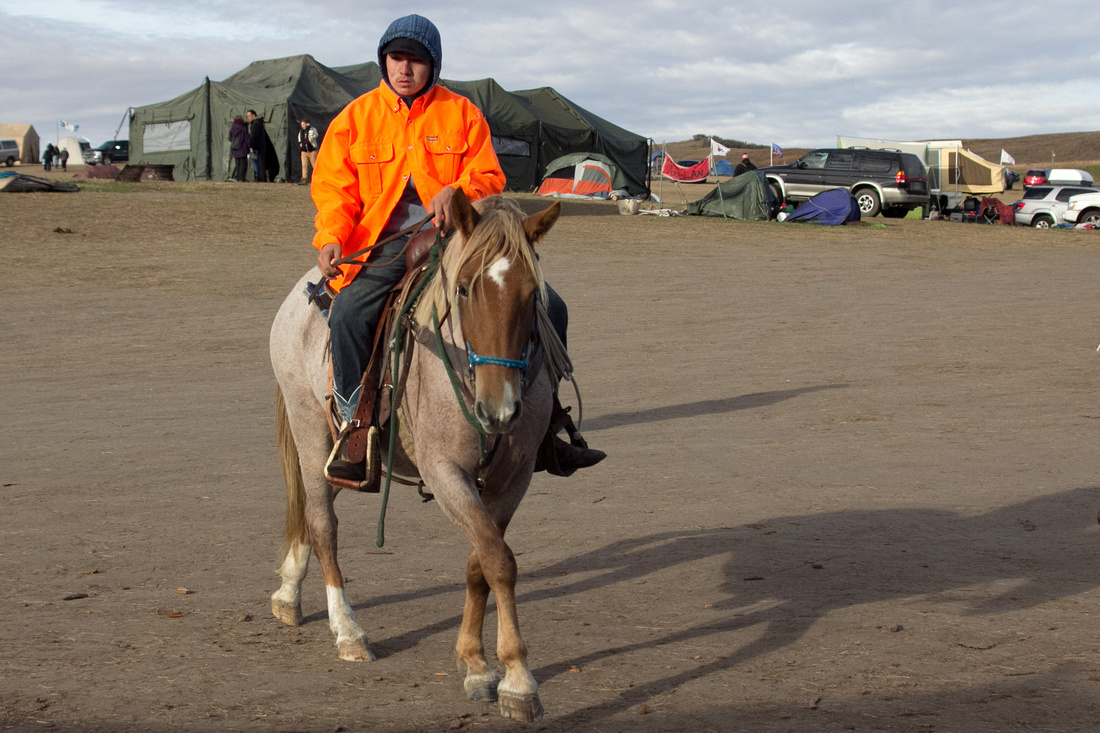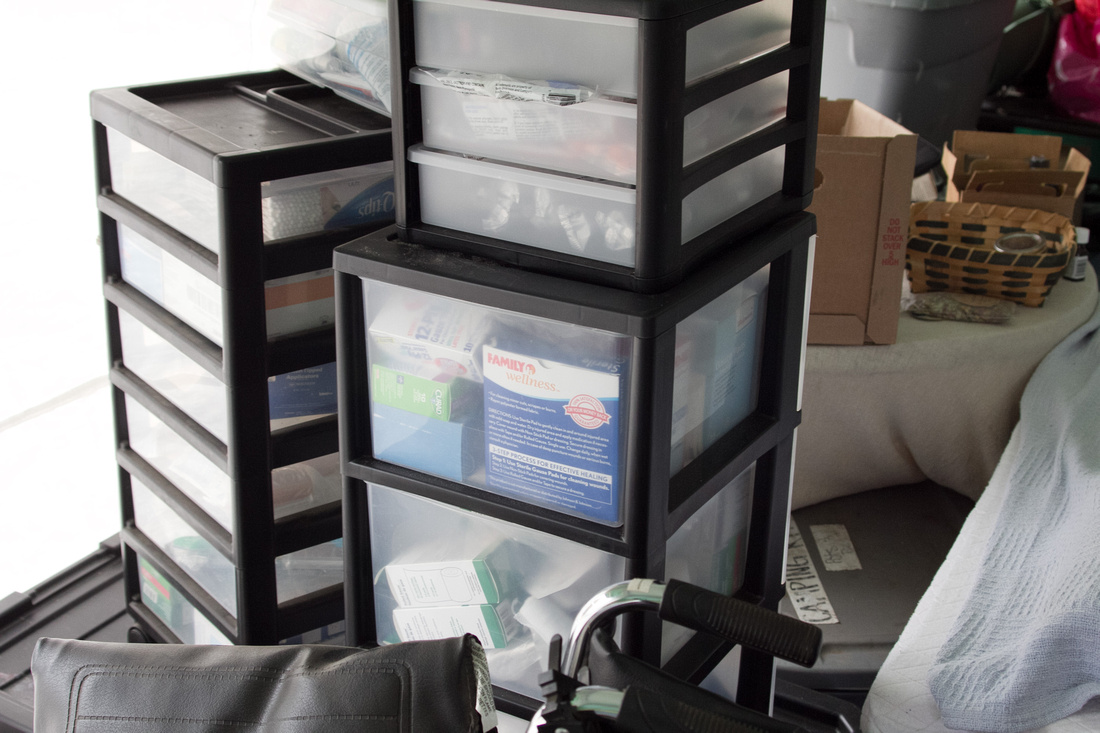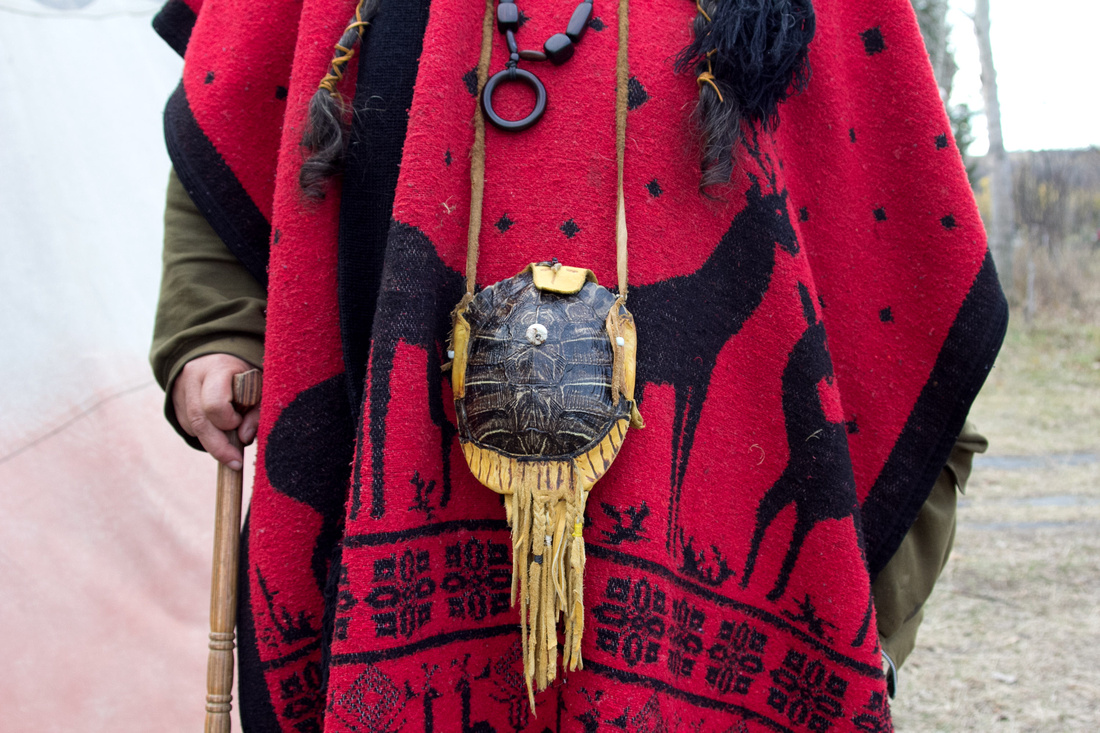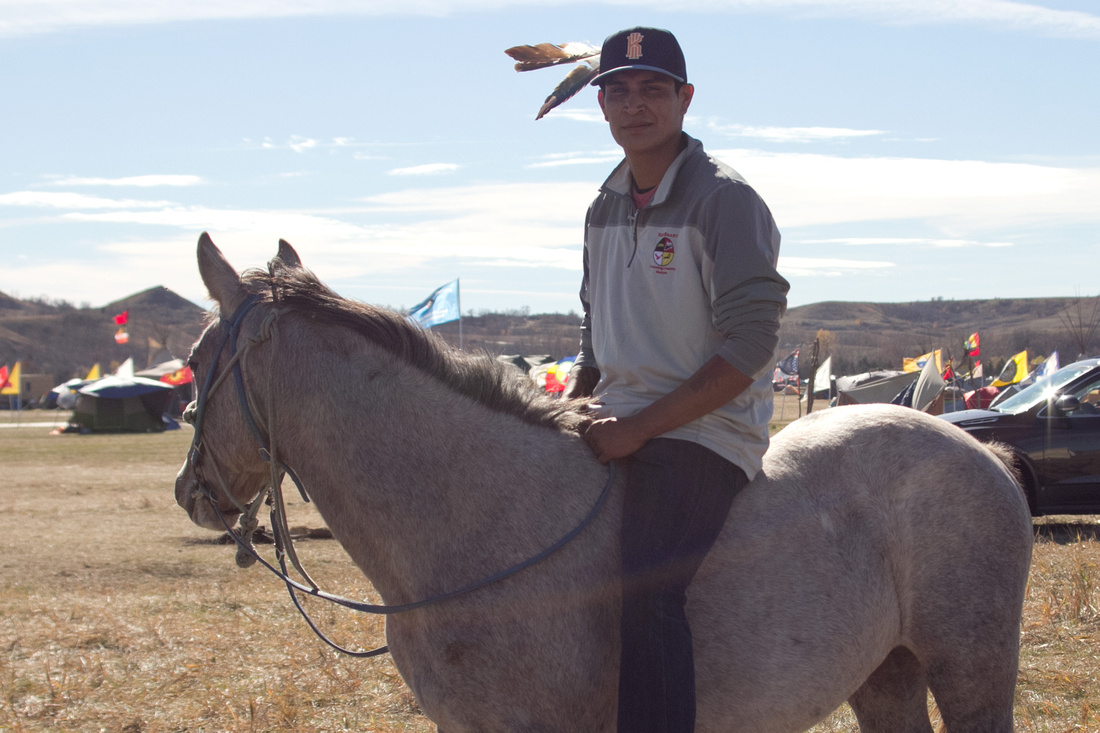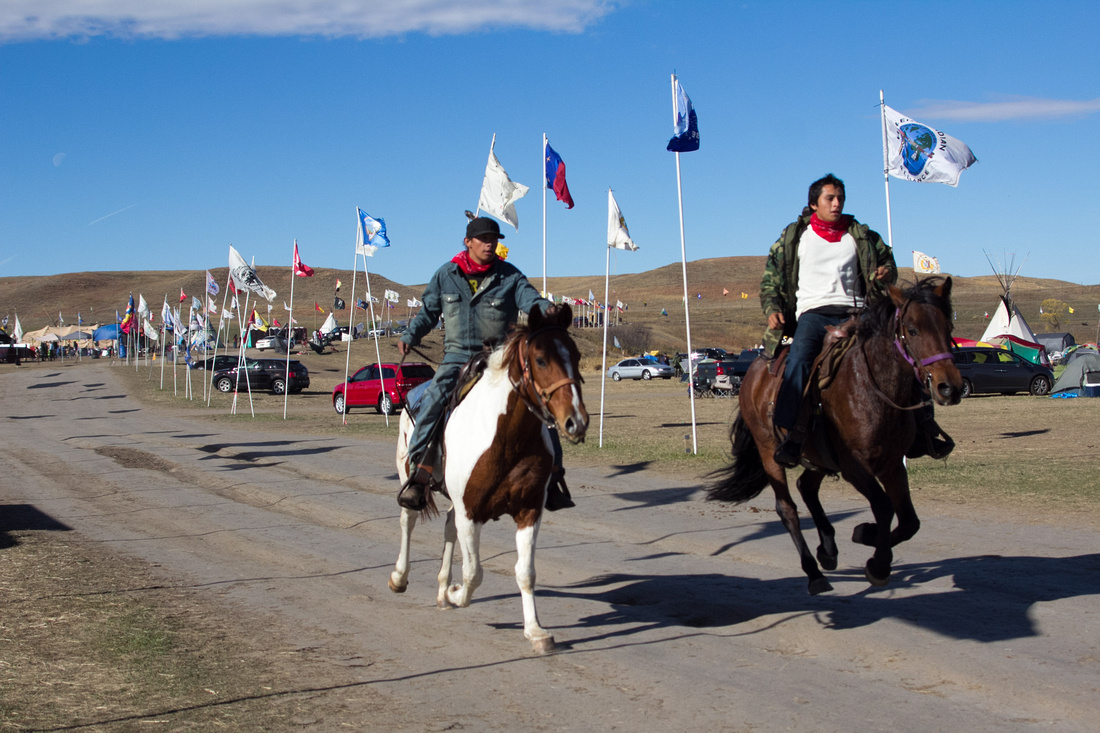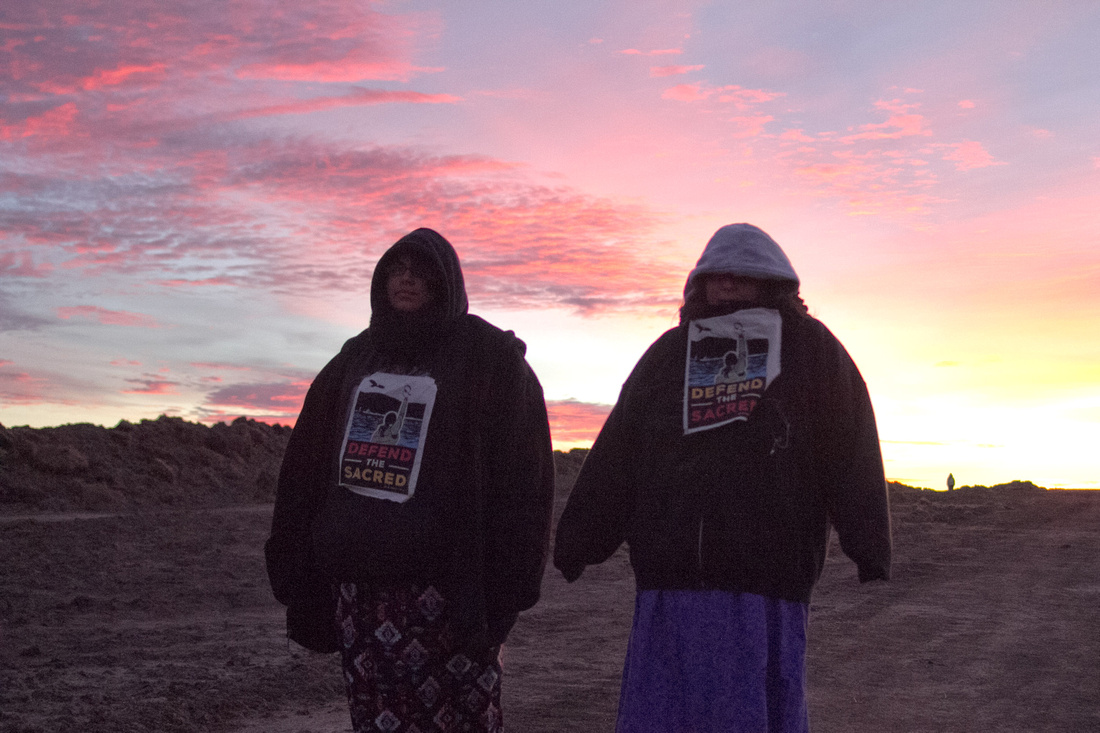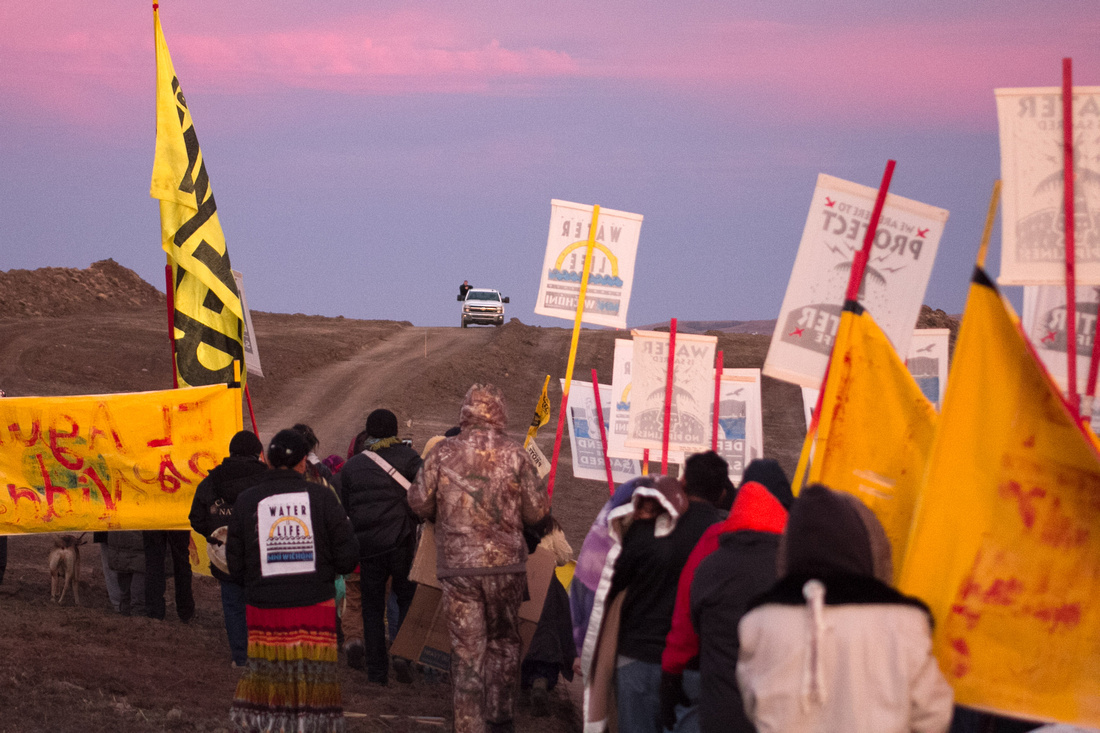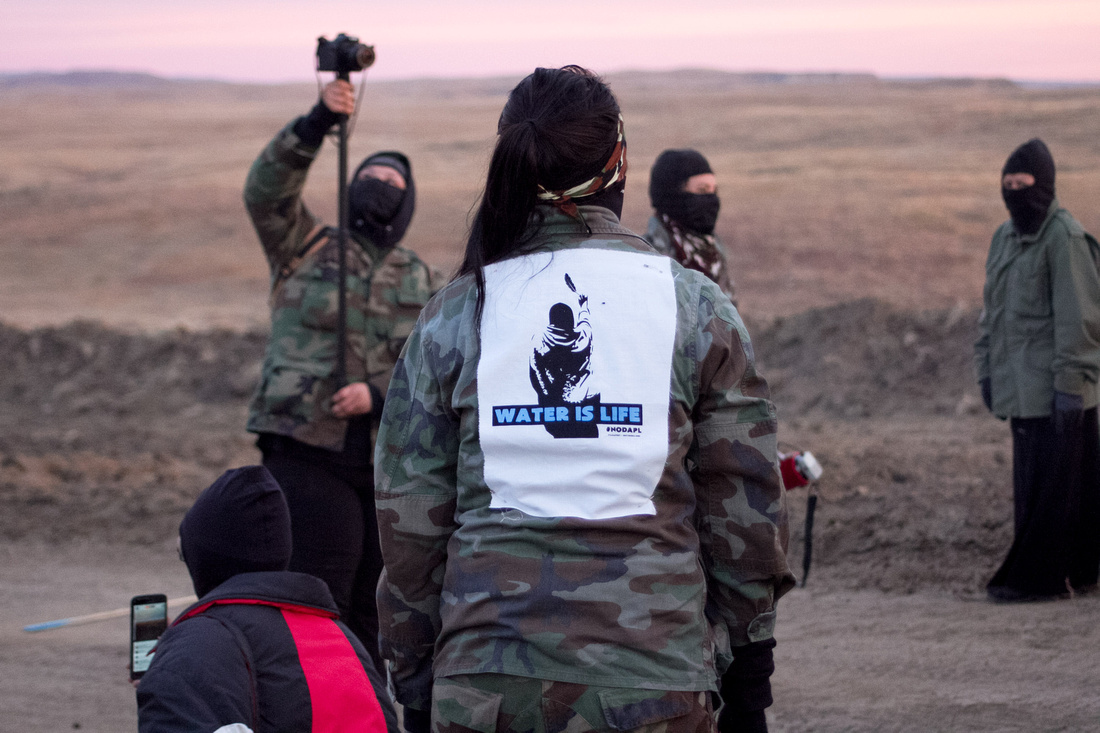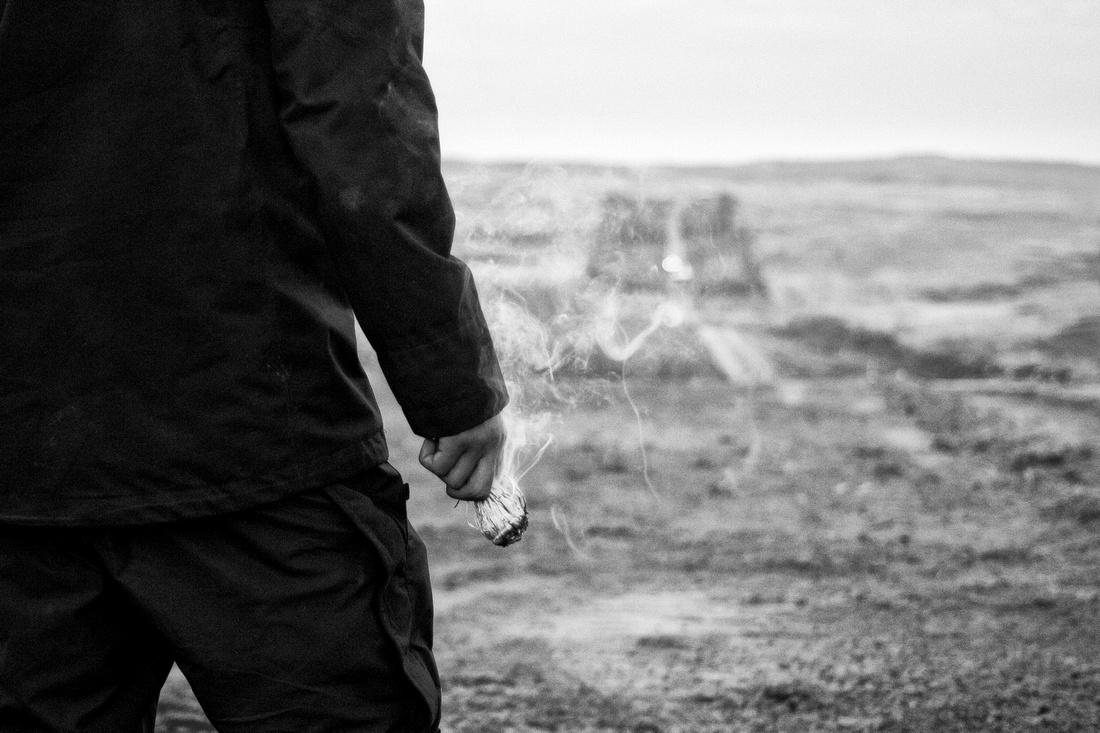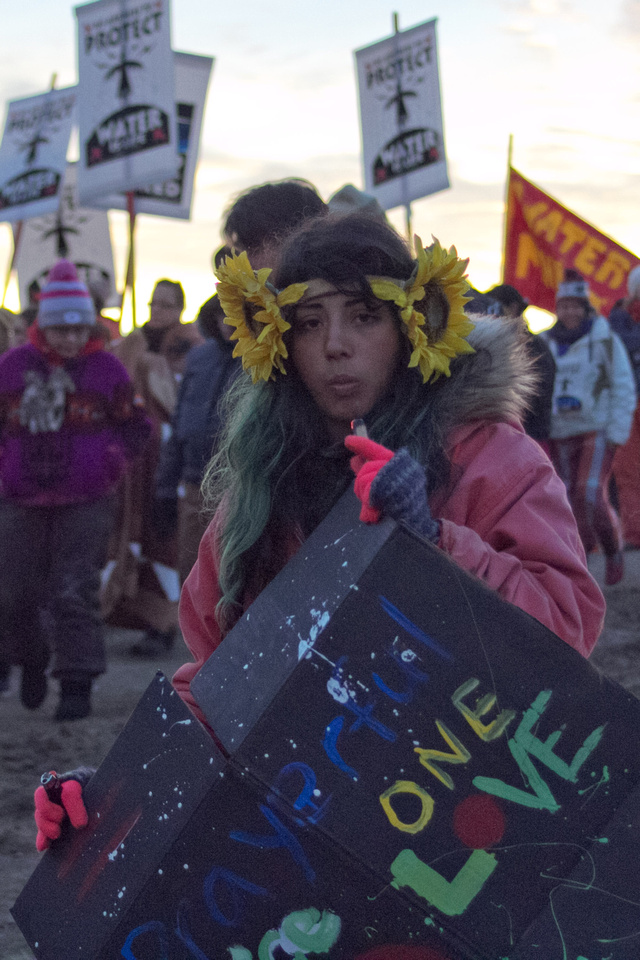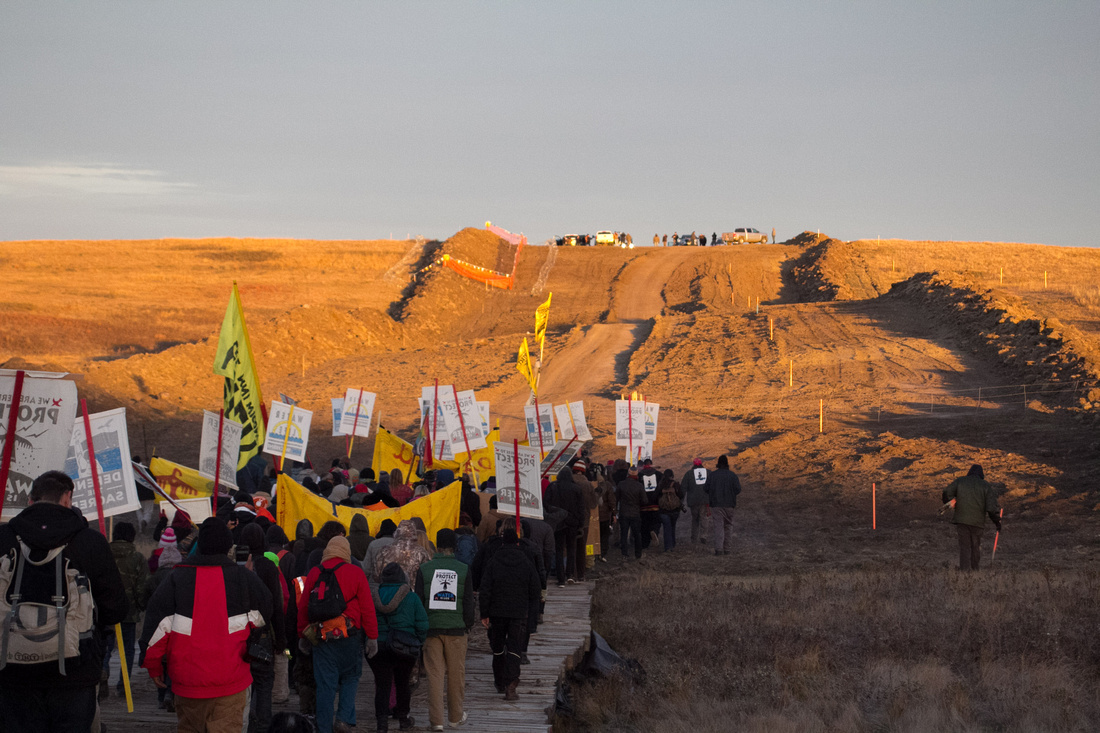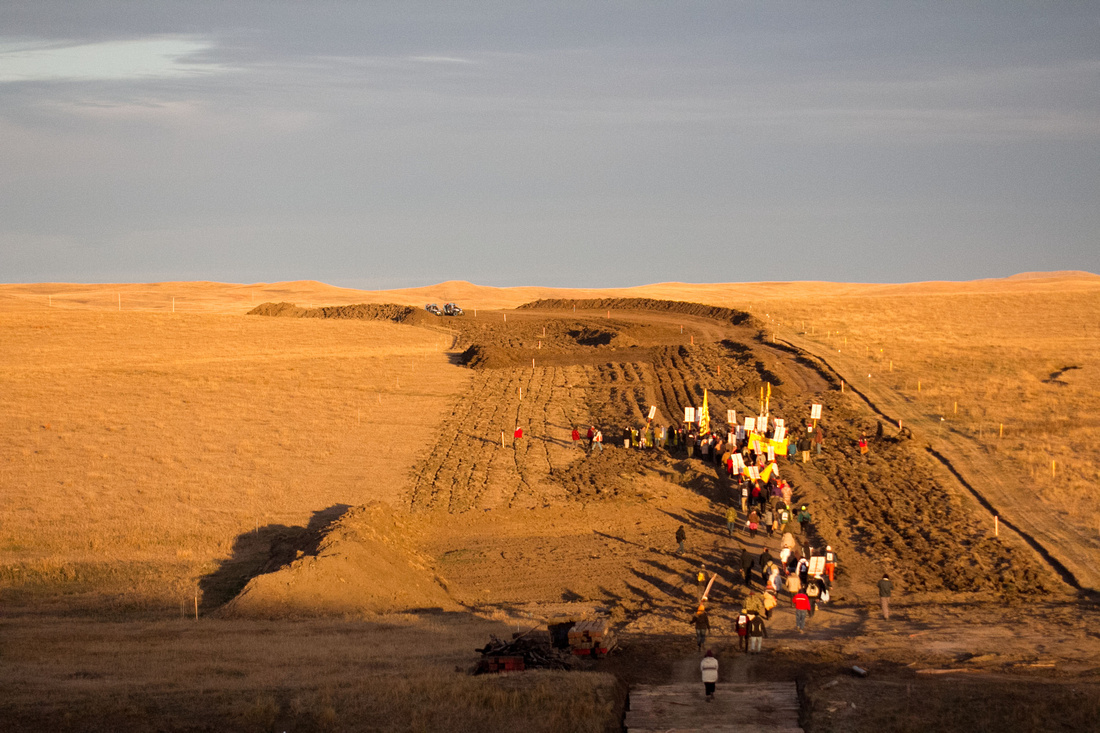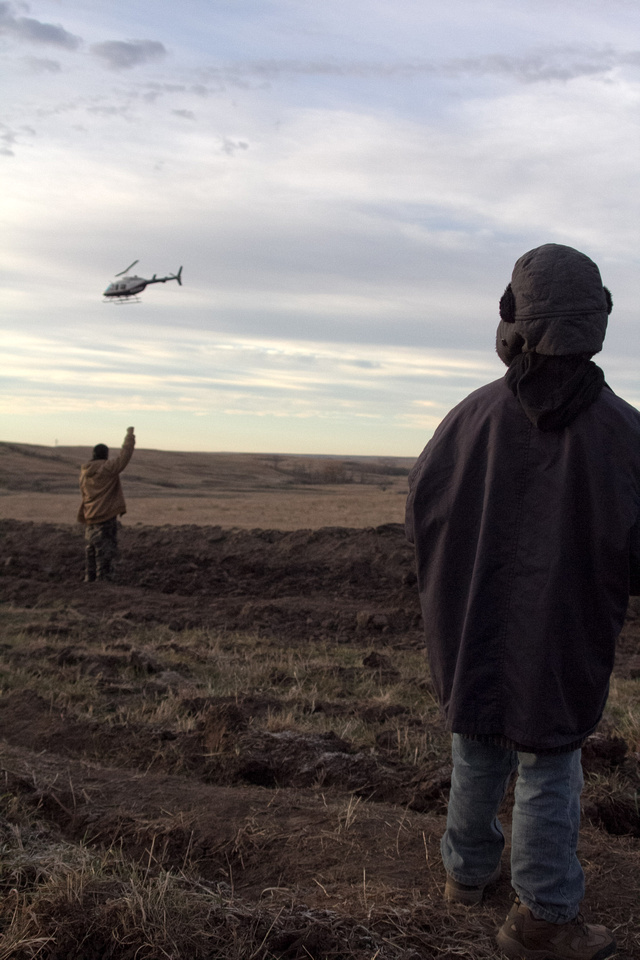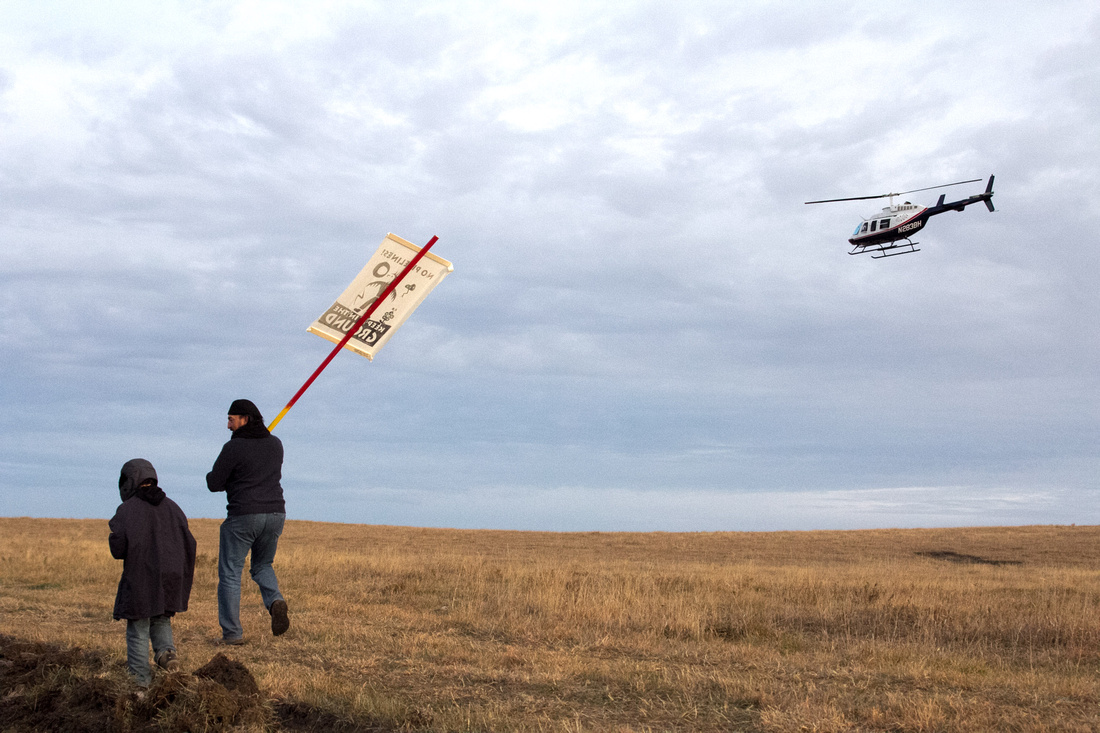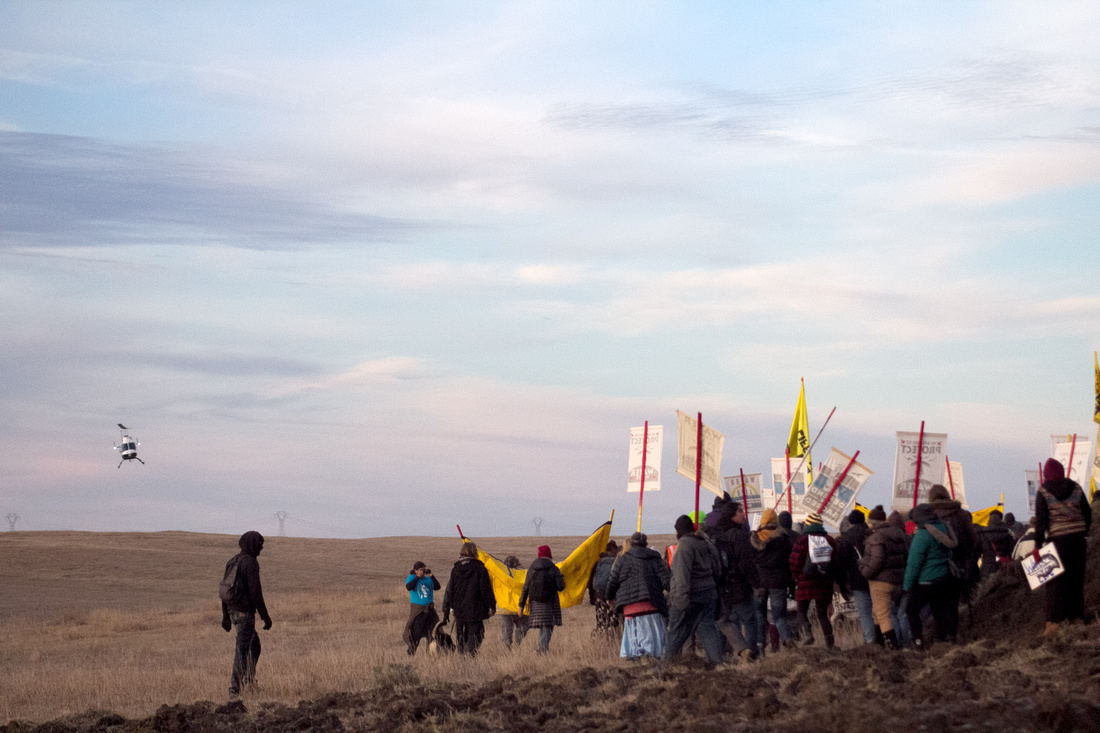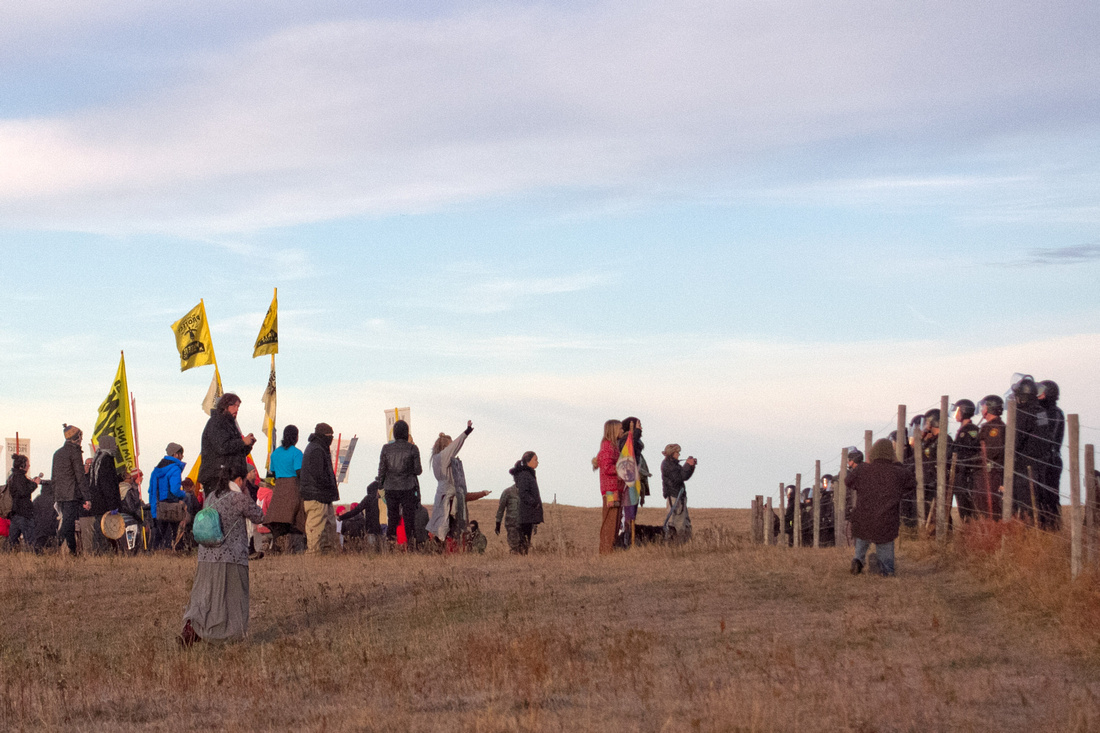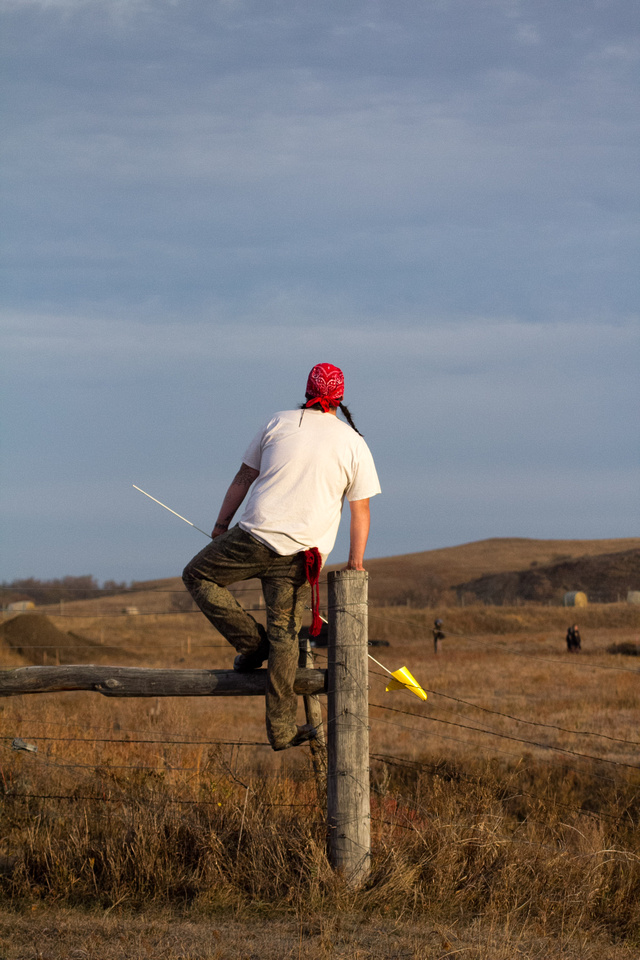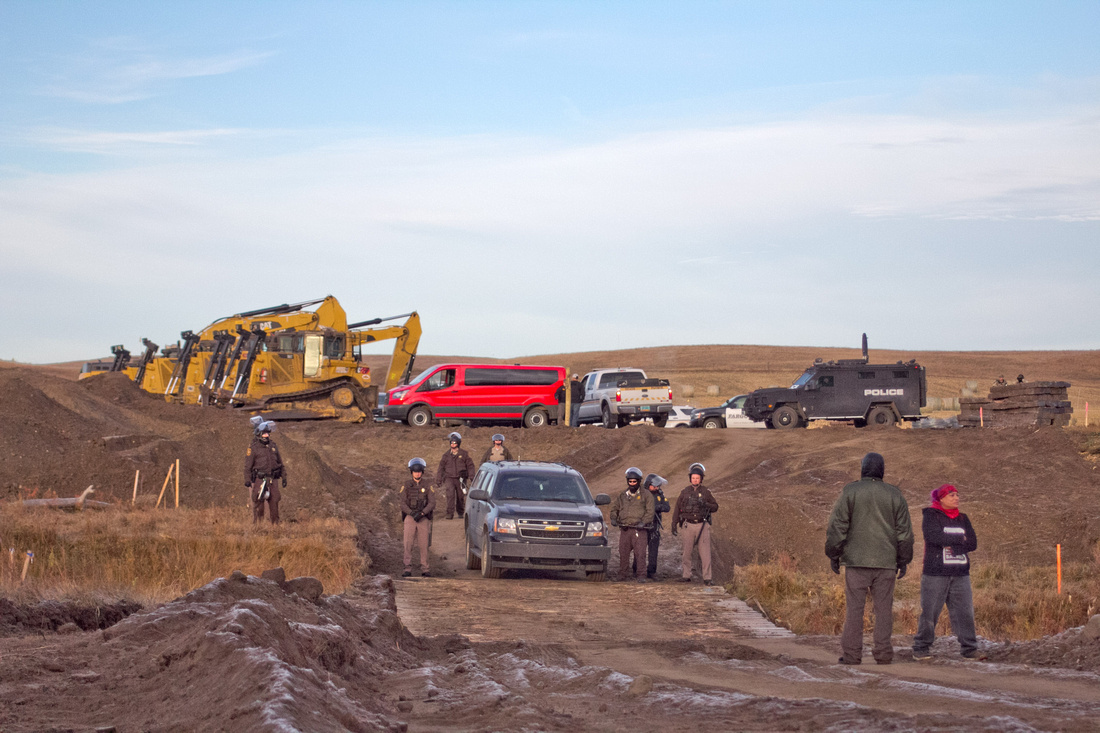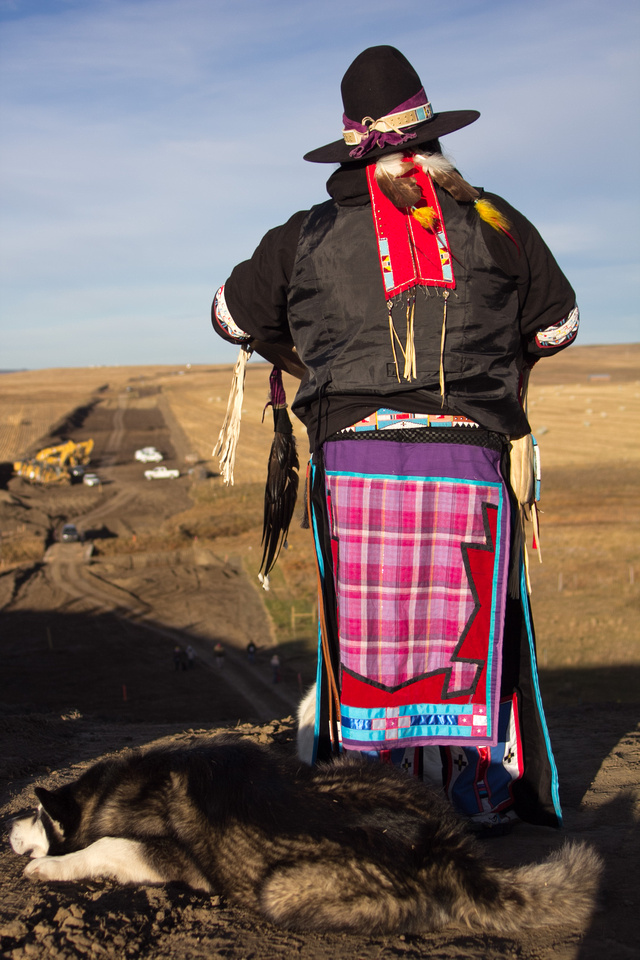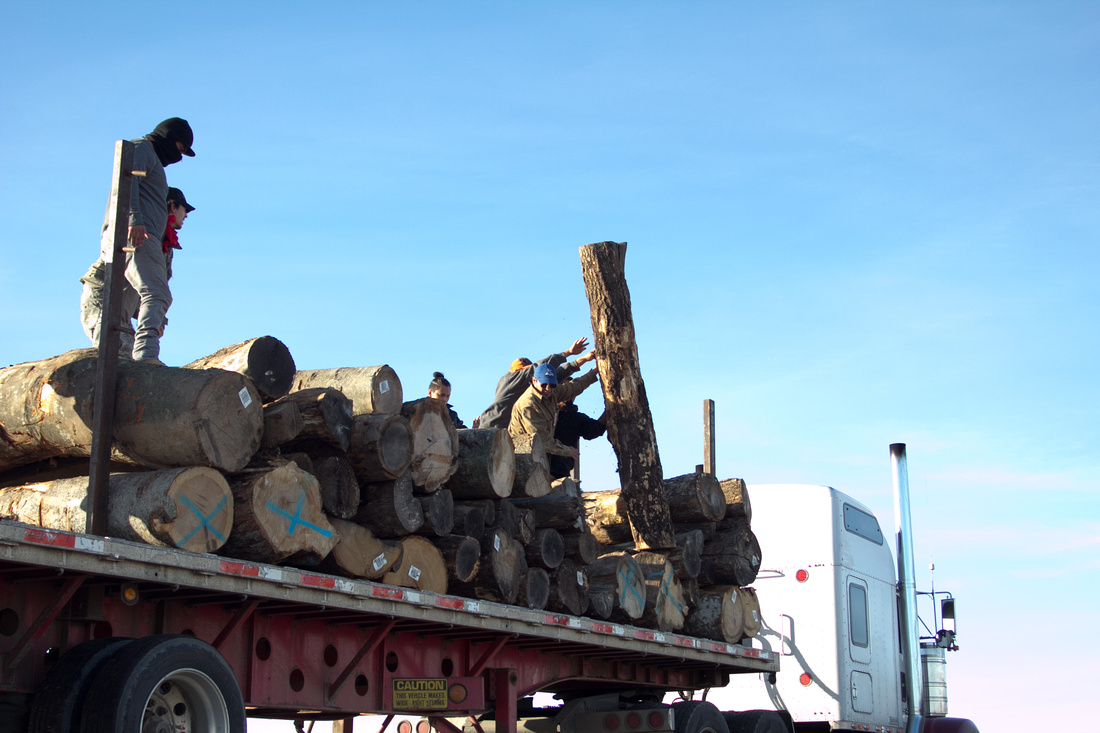Standing Rock Is Not A Protest
On the 18th of October, Juan-Carlos Delgado set off from Portland, OR in a white Ford F150 4X4 via Interstate 84. Traveling through Eastern Oregon, Idaho, Montana, and eventually reaching North Dakota. It was his intention of observing and documenting the camp at the Standing Rock Reservation in Cannon Ball, ND. His stay was cut short by several missteps on his part, all of which are explained in his transcript below. The following is taken from journal entries, video reports, and audio recordings Mr. Delgado sent back to Portland, OR shortly after leaving the camp. He kindly asked that I transcribe and publish the report here as he is on an extended road trip traveling through 13 states in the western half of the USA searching for the reasons this election season has been so strange, the strangest ever as far as most can tell.

10/20/2016 - The unmuffled pickup truck tore down the two late highway with a terrible metallic ripping noise that stood out harshly in a pristinely beautiful place such as Cannon Ball, ND. It was headed in the direction of the Red Warrior Camp but did not turn at the small dirt road leading to it and instead sped past it at an alarming speed. I had been warned repeatedly about photographing the warrior camp without their explicit permission. Something rarely given unless a direct action was going on. These are the vanguard, the physical manifestation of what is otherwise a spiritual gathering. In fact, those who have gathered here to stop the pipeline from burrowing under one of their most sacred resources ask that I call them protectors and not protesters.
As I completed my check in at the media tent, I was given a list of actions/places that I was forbidden to photograph as well as a press badge. The list seemed excessive at first but the more time I spent walking around, the more I realized the very sensitive nature of what we are dealing with here. A re-opening of a wound that never healed for an entire nation of people. Indeed, tribes that had been completely alienated from each other now camped together side by side. Together in their cause and culture. I am in on their land, and in particular, sacred ground. Even as I sit here now, typing with gloves so my hands don’t go numb with cold, young men from one end of the camp raise their voices and scream into the night in their native tongue “Water is Life” and seconds later, voices from across the river bank explode in response completing the moment.
To say that the rights of the native people of the United States have not been respected so well in the past is at best, a gross underestimation. These folks know they got the shaft, mainly because they keep getting it. To ignore the plight of the Native American in 2016 should be horrid to us, it’s almost cliché to talk about what should only be described as the genocide of these people. We are talking about folks that have very little to begin with. The socio economic status statistics alone would make even the most staunch libertarian a bleeding heart liberal.

10/21/2016 - The exodus continued for several hours after darkness had fully engulfed the campsite. Endless headlights climbing up a hill to exit the camp and turn left towards the Standing Rock reservation. Where they are going is anyones guess, it is Friday night after all. From what I was told by a tall Native man asking for a ride at the makeshift security gate, there is a casino 10 miles up the road. This happened earlier in the day and may be completely unrelated. I’ve not seen much outlandish behavior, nearly everyone I have met has been extremely gracious. The pockets of resistance I run into are understandable. The press has not always been a friend to the Native American.
There are two distinct sections of the DAPL resistance movement here. The larger and more commonly understood section of the camp that resides on the land owned and operated by the Army Corps Of Engineers is a sprawling expanse of teepees, tents, trailers and trucks. A few converted busses and the occasional Subaru Outback dotted here and there for good measure. You would find it hard to walk through the camp without being offered food and everyone here happily responds to being greeted. These folks may be the most embracing people I have ever had the pleasure to meet. Story after story is eagerly told to me over offers of swamp tea and other indigenous edibles and drinkables. No one here pays for food and no one goes hungry.
Like many things for the Native Americans, the Red Warrior camp across the river is a study in contradictions. Located properly on the Standing Rock reservation, the Red Warrior camp does not allow video or photography of any kind. Even the slightest inclination of such actions by a journalist will land them in serious trouble. I found this out earlier today when I tried to introduce myself to a knife wearing guard at the gate to the camp. The situation escalated quickly as I had entered the camp completely unnoticed by a group of Native America men whom I assumed would have stopped me if there was an issue with my presence. Unfortunately for me, they were simply unobservant and my presence there was indeed not welcome.
Having assured the angry man, and his incredibly scary knife, that I was as eager to leave as he was to have me go, I hurried myself down the mile long dirt path leading away from the Red Warrior camp towards the highway. I would have found it curious that the members of this camp were so resistant to the press had I not already walked through their camp. What I saw, and without going into detail, was the beginnings of the solidification of a long term occupation. The start of a long game of chicken with the Federal Government, the State of North Dakota, and the power brokers behind DAPL. The oil companies should not be afraid of what is here now, they should be afraid of those who stay behind once we all leave.

10/22/2016 The 6 am wake up call to prayer for the young men being sent out to the rising sun in support of the DAPL Resistance caught me just a bit off guard. I stumbled out into the freezing early morning air with my camera bag and back pack. I had on what I had worn to bed that night, thermal underwear and sweats. It had still been a cold night.
I quickly learned that earlier in the morning (several hours) members of the Red Warrior camp executed a direct action by locking themselves to the construction equipment at the DAPL construction site. The men utilized sleeves made out of pipe to make removing them more difficult. The police have to have them cut out in a very time consuming process. It’s an effective and extreme way of protesting not for the faint of heart. Of all the things these folks are short on, heart is not one of them.
The real urgency here is that the oil pipeline will run a particularly dirty type of oil called super crude oil and as of this report, is now only about 5 miles off the reservation. They Native Americans know they don’t have the upper hand in all this. The fact that the mostly Caucasian city of Bismarck did not want this very pipeline running through their water supply only serves to show where the state of North Dakota seemingly places it’s priorities. The police act unsure and yet determined to show force often when dealing with the Native Americans. Initially, almost baiting them by parking their vehicles up on a hill in a roadblock formation only to move back as the Native Americans approach them. Ultimately the police back up into a defensive position and wait for the go ahead to lunge forward and start arresting as many of the DAPL Resistance members as they can.
Today, between 80-100 DAPL Resistance members were arrested and several were injured by the arresting officers. An ambulance was seen leaving the demonstration but specifics have not been released as to why it was there in the first place. As I walked behind the DAPL Resistance march to and from the construction site, I observed two helicopters, a plane, and a drone following us. The helicopter would fly alarmingly close to the Native Americans as they marched in what appeared to me to be a act of intimidation. Almost immediately after starting the march, an emergency alert was sent out by the local authorities. The alert, that sounded exactly like an amber alert, let the entire community know that a protest was blocking the highway and that the police had closed the roads. The DAPL Resistance members were essentially trapped, as was I.
Technically, I was trespassing. The Native Americans claim to have the right to be on that land as it is their ancient ancestral burial grounds. However, that did not stop DAPL from beginning construction of the oil pipeline on that very land now owned by the Army Corps of Engineers. By the time I had hiked back from the construction site to my truck, the roads were open again and I was glad to be headed back to base camp. That cup of instant coffee never tasted so good.


10/23/2016 - By far today was the most intense day yet. On the heals of Saturday morning’s direct action came the shut down of the entrance and exits to the DAPL resistance camp without prior approval. I was stopped on my way back from the adjacent camp across the Cannon Ball River. The man who approached me was not someone I had met there before. He seemed a bit different, like he was prepared for conflict and in fact, had a hard time avoiding it. Interestingly, at this point, paramilitary style clothing was worn by some but not the Native Americans. These were outsiders, bearded white men with knives and wearing tans only awarded to those who have met the sun at its hottest and kept going. Men who understood checkpoints and the organizational structure to make them effective. I’ve seen these men before at other conflicts here in the USA. This is the first time I’ve seen them have to activate in this way. A surprisingly well oiled machine considering it’s running on broken down spare parts compared to law enforcement agencies. My first defense is to be assertive but nice. Honestly, this either goes over well or confuses the hell out of them. This time it went well. So well that I sat with those same guards for several hours following that incident. They were all anticipating an event that would not happen until a few days after that. However, the only thing they were wrong about was the timing.
As I bundled up under two sleeping bags and a blanket later that night, the normal drumming coming from the center of the camp did not stop at its regular hour. It went late into the night. Even more alarming was the volume and speed of the drumming. The singing was higher pitched and human voices participated in the rhythmic symphony much more frequently. It sounded like a (barely) restrained force, a rattle snake warning you that if you come closer, it meant trouble. These were the drums of war. The deep bass resonated as if it came from the underground, the earth a willing bandmate. I drifted off to sleep at some point early in the morning hours. I don’t remember exactly when, and it was not easy sleep.
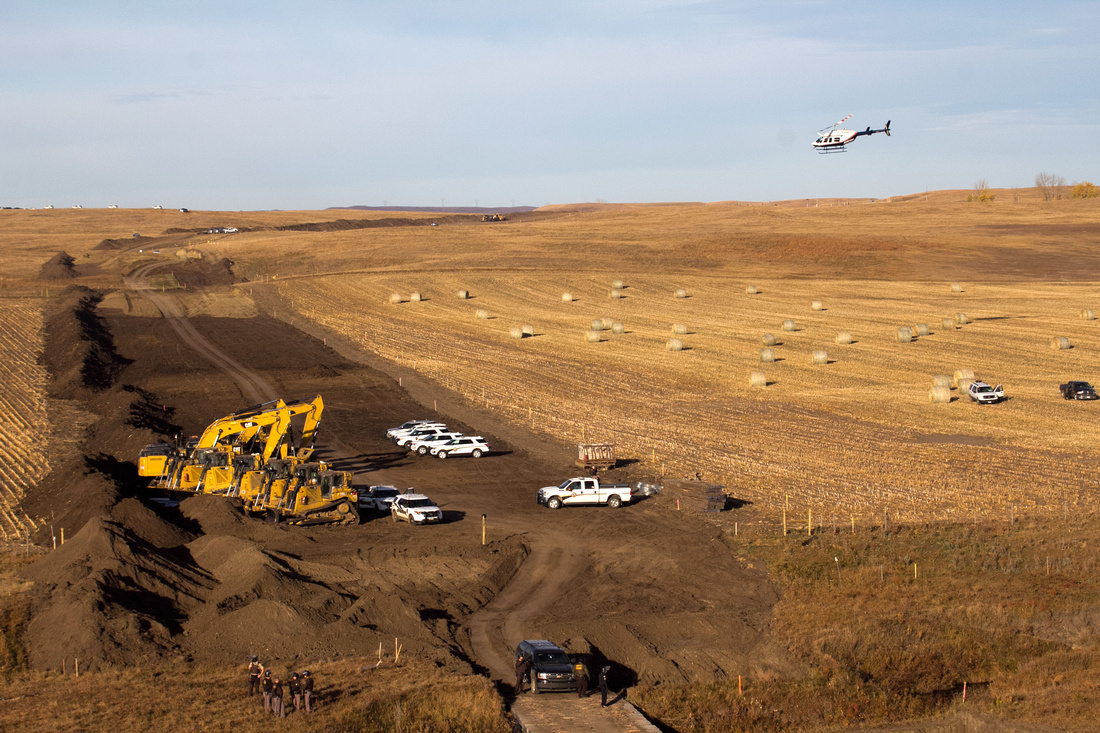

10/24/2016 - The morning started out with confusion and bad noises from all sides of my truck camper. I froze in my sleeping bag for a moment and then quickly reached for my shoes and hat. The door of the camper opened with a gentle snap as the frost broke away from it. I squinted and tried to focus on what was going on all around the camp. I saw nothing out the of ordinary and walked to the port-a-potty in a bit of confused state.
The morning progressed like any other, some seemed relieved that the authorities had not raided the camp in the middle of the night. Still, a sense of tension ran through the camp amongst the people who where charged with keeping it a safe place for everyone there. I made a cup of coffee and surveyed the scene. It seemed as if everything was going to be ok for a moment and thought that it seemed like a good time to head into town to refill my supply of water and find a strong wifi connection. Having been warned of road blocks going south that were passable, I drove to the front line heading north just a couple of miles from the camp to see if it looked the same. Upon my arrival, I was informed that the due to legal liability reasons of protesters blocking the road and delaying emergency vehicles, some of the organizers were asking people to return to the south camp as the north camp was still being set up at this time. I kept walking north trying to get some idea of how passible the highway was. From what I could see, there were no immediate police checkpoints visible. I got back into my truck and took what turned out to be a one way ride into Mandan.
Almost immediately I regretted my decision. What happened next was an eye opening 15 min look at how the hammer comes down in ND. See, that’s the thing about hammers, it does not matter how old or slow they are, they all work the same. I made the one critically bad move that anyone that has had bad run-ins with the police makes when questioned, I hesitated. In hindsight, police and military road blocks have always been an issue for me. Back in 2009 I had a similar incident in Sri Lanka, however, this one was far less intense. In this instance, I was pulled over and made aware that the road leading to the camp was closed until further notice due to protesters unlawfully trespassing and creating unsafe conditions. I informed the officer that I was with the press and asked if I would be let back in. The officer simply stated that if I returned to the camp I would be trespassing and that my information will be recorded to serve as prior warning. I drove off irritated and weighing the pros and cons of an arrest and vehicle impoundment. That day, as I sat in a Hardees in Mandan, ND, I saw the first inklings of a viral news story about Standing Rock. I felt a pang of relief. Say what you will about Millennials, they are the greatest consumers of actual hard news. I knew that at the very least the world would now know what happened in Cannon Ball, ND at the start of the cold season in this fateful, agonizingly long year of our lord, 2016.
